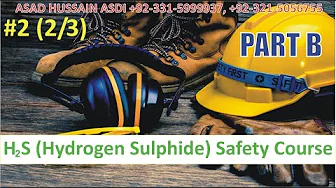IOSH Managing Safely Course in Islamabad In Pakistan (Rawalpindi, Peshawar)
IOSH Managing Safely Course in Islamabad
The course is consists of 7 modules and is assessed with a short test and risk assessment project.
IOSH Managing Safely learning outcomes:
IOSH Managing Safely has 8 learning outcomes. By the end of the course, learners will be able to:
Describe the key reasons to manage safety and health in the workplace.
Define the key terms relating to safety and health.
Identify how the law can have an impact on safety and health in the workplace.
Describe how to assess, reduce and control risk in the workplace.
Identify workplace hazards and risks, their impact and how to manage them.
Identify how to evaluate and respond to an incident.
List the benefits and characteristics of an effective health and safety management system.
Describe the principles that underpin good safety and health performance.
IOSH Managing Safely course syllabus
Module 1: Introducing Managing Safely
The three key moral, legal and financial reasons for managing safely
Manager responsibility and accountability for safety and health in the workplace
Module 2: Assessing Risk
Definitions of the terms ‘hazard’, ‘hazardous event’ and ‘risk’
Definition of the term ‘risk assessment’
Definition of the terms ‘likelihood’ and ‘consequence’
Risk assessment process and risk rating systems
The benefits of carrying out risk assessment
Module 3: Controlling Risk
Definition of the term ‘reasonably practicable’
How to evaluate risk using a risk matrix and how to control those risks
How to reduce risk by applying the ‘hierarchy of risk control’
How implementing risk controls can impact the likelihood of an incident, consequence of an incident or both factors
Definition of the term ‘residual risk’
Module 4: Understanding Managers Responsibilities
An overview of what the law requires an organisation to do to protect the safety and health of workers and other persons under its control
Definition of the term ‘reasonably foreseeable’
The three knowledge tests to help determine ‘reasonably foreseeable’ risks: common, industry and expert knowledge
The difference between criminal law and civil law in relation to safety and health
The possible outcomes of not working within the law
Where to find help and guidance for working within the law
The key parts, and the elements of each part, of a health and safety management system
The key benefits of introducing a health and safety management system
Why leadership is an essential part of a health and safety management system
Module 5: Understanding Hazards
The six main hazard categories and how hazards can fall into more than one group:
Common hazards in the workplace, their effects, and how to manage them: Hazards covered are:
aggression and violence
asbestos
bullying
chemicals
computer workstations
confined spaces
drugs and alcohol
electricity
fire
getting in and out
heights
housekeeping
lighting
manual handling
noise
plant and machinery
radiation
slips and trips
stress
temperature
vehicles and transport
vibration
any other relevant hazards
Module 6: Investigating Accidents
Definition of the terms ‘incident’, ‘accident’ and ‘near miss’
Reasons to investigate incidents
The benefits of incident investigation
Definition of the terms ‘immediate’, ‘underlying’ and ‘root’ causes in relation to incidents
The actions to be taken following an incident
Incident reporting
The stages of a structured approach to incident investigation
Module 7: Measuring Performance
The three essential principles for good safety and health performance
What types of information performance indicators can give to help improve safety and health in the workplace
The characteristics of good key performance indicators
The differences between ‘proactive’ and ‘reactive’ performance indicators
What is meant by ‘auditing’
The two types of auditing: internal and external
Types of evidence used in an audit
IOSH Managing Safely course assessment
Learners must pass two-course assessments:
An online knowledge and comprehension test is taken at the end of the course. Learners will have 45 minutes to answer 30 questions in a variety of formats, including multiple-choice, true/false and open questions.
A practical application of learning submitted within 2 weeks of finishing the course. Learners must carry out a risk assessment to identify hazards within their workplace and describe the actions needed to control them.
we are offering this diploma course in Distance Learning mode of studies. As we have got a lot of requests from students and professionals working abroad, not having enough time to complete these courses on a regular mode of study due to Jobs or Academic qualifications.No doubt this is also a good opportunity to those who want to improve their CPD (Continous Progress Development).We are approved/affiliated with SECP, RCCI, National Training Bureau, Trade Testing Board, Skill Development Council, Professional Skill Science Course, Skill Development Association, Trade Testing Professional Council, IQRA Educational Council, Professional Skill Educational Council, Awarding Body for Qualifications & Certifications the United Kingdom. World Safety Organization (WSO-USA), IOSH, NEBOSH, International Association of Safety Professionals IASP-USA, IPQI-USA, CIEH (Approved center No. ORG02148), IIRSM, CAB-QC Canada, PECB Canada, United Kingdom Association of Professionals UK, Innovative Certifications Registrar ICR International & Training Accreditation and Certification Organization (Traccert Canada). So we have now got approval from different organizations for these Distance Learning Programs. For Quality Education systems now Inspire Institute of Technologies Pakistan Private Limited is a Compliant & Certified ISO 9001:2015 (414173) organization. This qualification has been accredited onto the Regulated Qualifications Framework (RQF).
****** For Registration & Information ******
For Free Video Lectures Click Here












